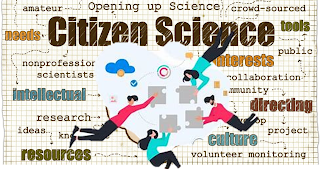Blockchain and Collaboration
In the modern digital landscape, collaboration within distributed work environments is paramount. As remote work continues to gain prevalence, the need for effective collaboration tools becomes even more critical, ensuring that teams remain connected and productive.
Artificial intelligence (AI) and blockchain stand as two revolutionary technologies emerging from the Fourth Industrial Revolution (IR4.0), each driving significant industry transformations.
AI, capable of performing complex tasks that traditionally required human intelligence, holds the potential to surpass human capabilities. As a major driver of industrial development, AI seamlessly integrates with emerging technologies in the IR4.0 era.
Blockchain and distributed ledger technologies (DLTs) are revolutionizing how businesses manage tangible and digital assets. Similar to the foundational TCP/IP protocols that power enterprise network communications, shared ledgers are poised to become the invisible backbone of business operations. This technology empowers industry leaders to expand their portfolios and pioneers to reimagine innovative business models.
Blockchain made its debut in 2009 with Satoshi Nakamoto's Bitcoin, as revealed in the 2008 whitepaper. Initially, it served as a ledger for Bitcoin transactions, but its decentralized nature and secure transaction recording capabilities quickly piqued interest.
To best understand the concept of a blockchain, imagine a universally accessible virtual notebook where all transactions or data exchanges are written down. This notebook is duplicated across a network of computers, making it highly secure and transparent. Each 'page' in the notebook is a 'block' of data, and they are all linked together in a 'chain', hence the name blockchain. Each block contains a unique identifier called a hash, which is a cryptographic representation of the data within the block. It also includes the hash of the previous block, creating a chain. This linkage ensures the integrity of the entire blockchain—if one block is altered, it would be immediately evident. Transactions are grouped into blocks and added to the chain in a linear, sequential order. This process typically requires consensus mechanisms like Proof of Work or Proof of Stake to validate and add new blocks. This is a puzzle-solving process known as "mining" through which new Bitcoins are created and added into circulation. Bitcoins serve as an incentive for miners to keep the network secure and functional.
The early days of DLT were marked by excitement and speculation, as innovators explored blockchain's potential applications. While viewed as a disruptor, challenges like scalability and energy-intensive consensus mechanisms, notably proof-of-work, emerged.
As the technology matured, companies recognized the limitations of first-generation blockchains. Rather than abandoning it, they shifted focus to applications with proven benefits, marking a transition from speculation to practicality.
Blockchain and DLT platforms evolved to handle tasks beyond cryptocurrency transactions, from identity management to data integrity and asset provenance. They transcended simple value transfers and secured various assets and transactions.
Another type of DLT, Tangle, used by IOTA (built for the “Internet of Everything”), doesn't have blocks or a chain structure. Instead, it uses a directed acyclic graph (DAG) structure where each transaction is its own node. For a new transaction to be added, it must validate two previous transactions. This creates a web-like network of interconnected transactions. There’s no need for miners (as in Bitcoin's blockchain); transactions are directly validated by the participants. This structure allows for parallel processing of transactions, potentially leading to higher scalability and no transaction fees. Like Tangle, Hashgraph is DAG-based and doesn’t rely on blocks or a chain. It uses a gossip protocol where each node spreads information on transactions to its neighbors, rapidly disseminating the data across the network. It records not just the transactions but also the history of how the information about transactions is spread, which helps in reaching consensus quickly and efficiently. Hashgraph claims to offer faster transaction speeds and better scalability compared to traditional blockchain.
The development of sidechains and layer-two solutions has improved scalability, while advancements in cryptographic techniques have enhanced privacy. Innovations like energy-efficient consensus mechanisms and private and permissioned networks reduced energy consumption, transaction costs, and enhanced security, driving enterprise adoption.
Platforms like Polkadot, Cosmos, and Wanchain promoted cross-chain collaboration by addressing interoperability challenges, enabling data and asset exchange among diverse blockchains.
Blockchain and DLTs are maturing and transitioning from theoretical concepts to practical applications. IBM has developed a blockchain platform for supply chain management, while Microsoft and Walmart have partnered to use blockchain for tracking food products. The United Arab Emirates has established a regulatory sandbox for blockchain and DLT projects.
This exemplifies their enduring potential to redefine how we conduct business across boundaries.
In today's distributed work environments, collaboration is the lifeblood of productivity. Various communication and collaboration platforms, such as Fuze, RingCentral, Vonage, 8x8, Dialpad, and Star2Star, play a crucial role in supporting teams. These platforms offer a spectrum of tools, from real-time messaging to high-capacity video conferencing, ensuring teams can collaborate effectively regardless of their locations.
The significant role that blockchain plays in the collaborative economy cannot be understated. It provides a secure and transparent foundation for cross-boundary collaborations, offering efficiency, trust, and innovation. As the technology continues to mature, it promises further transformative potential across various industries. The journey from hype to practicality underscores its enduring influence on modern business operations.
REFERENCES
Nakamoto S. Bitcoin: A peer-to-peer electronic cash system. Decentralized business review. 2008 Oct 31.
Han H, Shiwakoti RK, Jarvis R, Mordi C, Botchie D. Accounting and auditing with blockchain technology and artificial Intelligence: A literature review. International Journal of Accounting Information Systems. 2023 Mar 1;48:100598.
Kumar S, Lim WM, Sivarajah U, Kaur J. Artificial intelligence and blockchain integration in business: trends from a bibliometric-content analysis. Information Systems Frontiers. 2023 Apr;25(2):871-96.
Cerchione R, Centobelli P, Riccio E, Abbate S, Oropallo E. Blockchain’s coming to hospital to digitalize healthcare services: Designing a distributed electronic health record ecosystem. Technovation. 2023 Feb 1;120:102480.
Thomas Stackpole What Is Web3? Your guide to (what could be) the future of the internet. May 10, 2022 https://hbr.org/2022/05/what-is-web3



Comments
Post a Comment